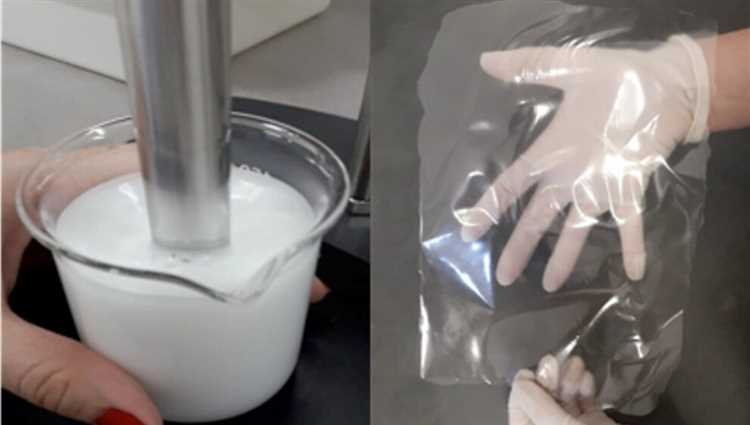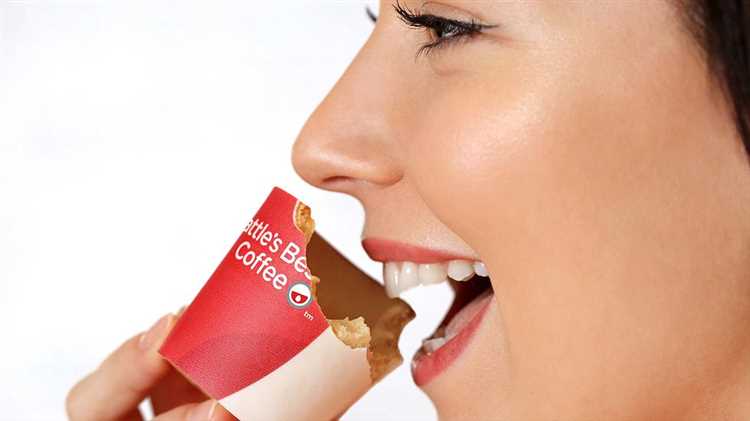Plastic, while extremely useful, has become a major environmental concern due to its non-biodegradable nature. Researchers and scientists all around the world are actively searching for sustainable alternatives to traditional plastic. One intriguing possibility is the development of edible plastic.
Edible plastic refers to a type of plastic that is safe for consumption and can be broken down by the human body or the environment. It is an innovative solution that tackles both the waste generated by traditional plastic and the potential harm it poses to wildlife. This emerging field of research holds immense promise in creating a more sustainable and eco-friendly future.
Exploring the possibilities of edible plastic involves investigating various materials and technologies. Many researchers are experimenting with natural ingredients such as seaweed, plant-based fibers, and even fruit by-products to create edible plastic. These materials offer immense potential for creating a plastic-like substance that can be safely ingested and digested.
Edible plastic could have a wide range of applications. It could be used as a packaging material for food products, reducing the amount of waste generated and eliminating the need for separate disposal. It could also be used in the medical field, such as creating edible sutures that dissolve in the body, reducing the need for additional surgeries to remove the sutures. The possibilities are endless and could revolutionize multiple industries.
- The Definition of Edible Plastic
- Potential Applications of Edible Plastic
- The Benefits of Edible Plastic
- The Challenges of Edible Plastic Production
- 1. Safety and Regulatory Approval
- 2. Taste and Texture
- The Future prospects of Edible Plastic
- 1. Reduced waste:
- 2. Enhanced product safety:
- 3. Customizability:
- 4. Nutritional enhancements:
- Question and answer:
- Is edible plastic safe to eat?
- Are there any benefits to using edible plastic?
- How is edible plastic made?
- What are some possible applications of edible plastic?
- Is edible plastic more expensive than traditional plastic?
The Definition of Edible Plastic
Edible plastic refers to any type of plastic material that is safe for consumption by humans. Unlike conventional plastic, which is typically made from petroleum-based chemicals, edible plastic is made from natural ingredients that are considered food-grade and safe for ingestion. The main purpose of edible plastic is to provide an alternative to traditional plastic packaging and containers, which often pose environmental problems due to their non-biodegradable nature.
Edible plastic can be made from a variety of sources, including plant-based ingredients such as seaweed, starches, and proteins. These natural ingredients are processed and transformed into a material that has similar characteristics to conventional plastic, but can be safely consumed or broken down by the digestive system.
One of the key advantages of edible plastic is its potential to reduce plastic waste and pollution. Traditional plastic products can take hundreds of years to degrade, leading to a buildup of waste in landfills and oceans. Edible plastic, on the other hand, can be safely consumed or broken down, reducing the environmental impact.
Edible plastic can also offer practical benefits, such as providing an additional source of nutrients or flavors. For example, edible films made from fruit extracts can add a natural flavor to food products and help extend their shelf life. Furthermore, edible plastic can be used as a way to enhance the aesthetic appeal of food, by creating unique shapes or designs that are visually appealing.
Overall, edible plastic represents an innovative solution to the problems associated with traditional plastic materials. It offers a way to reduce waste, improve sustainability, and potentially enhance the food experience. While still a developing field, the possibilities for edible plastic are vast, and ongoing research and development are likely to uncover new uses and applications in the future.
| Pros | Cons |
|---|---|
| – Reduces plastic waste and pollution | – Limited scalability |
| – Food-grade and safe for consumption | – Higher production costs |
| – Offers potential for additional nutrients or flavors | – Limited shelf life compared to conventional plastic |
| – Can enhance the aesthetic appeal of food | – Current limitations in material strength |
Potential Applications of Edible Plastic
Edible plastic, also known as food-grade plastic, has the potential to revolutionize various industries. Its unique properties make it suitable for a wide range of applications. Here are some potential uses of edible plastic:
- Food Packaging: Edible plastic can be used to create packaging materials that are not only environmentally friendly but also safe to consume. This can help reduce plastic waste and provide an innovative solution to the growing packaging problem.
- Single-Use Utensils: Disposable utensils made from edible plastic can eliminate the need for plastic cutlery, which often ends up in landfills or oceans. These edible utensils can be enjoyed along with the meal, reducing waste and promoting sustainability.
- Medical Devices: Edible plastic can be used to create medical devices that can be safely consumed by the body. For example, edible surgical sutures can reduce the need for additional surgeries to remove them, leading to improved patient outcomes and reduced medical waste.
- Personal Care Products: Edible plastic can also be incorporated into personal care products such as toothbrushes and soap. These products can provide a zero-waste alternative to traditional plastic-based products and enhance the overall sustainability of the personal care industry.
- 3D Printing: Edible plastic can be used as a material in 3D printers to create intricate and customizable edible objects. This opens up a world of possibilities for creating edible decorations, intricate food designs, and personalized confections.
These are just a few of the potential applications of edible plastic. As technology continues to advance and researchers explore new possibilities, we can expect to see even more innovative uses for this unique material.
The Benefits of Edible Plastic
Edible plastic holds several potential benefits that make it an attractive prospect in various industries and applications.
- Reduced waste: Edible plastic can help reduce plastic waste by providing a biodegradable alternative. Unlike traditional plastic, which can take hundreds of years to decompose, edible plastic can be easily broken down by natural processes.
- Improved food safety: Edible plastic can be used as a protective coating for food products, helping to extend their shelf life and prevent contamination. Additionally, it can be infused with antimicrobial properties to further enhance food safety measures.
- Versatility: Edible plastic can be molded into various shapes and forms, allowing for a wide range of applications. It can be used as packaging material, cutlery, or even as an ingredient in food products.
- Sustainability: Edible plastic can be produced using renewable resources, such as plant-based ingredients, reducing dependence on fossil fuels. This makes it a more sustainable option compared to traditional plastic.
- Diverse applications: Edible plastic has potential uses beyond traditional plastic applications. For instance, it could be used in the medical field for drug delivery systems or as a biodegradable implant material.
While there are still challenges to overcome in terms of mass production, cost-effectiveness, and consumer acceptance, the benefits of edible plastic make it an exciting area of research and innovation.
The Challenges of Edible Plastic Production
While the concept of edible plastic holds great promise in terms of reducing waste and providing a sustainable alternative to traditional plastic, there are several challenges that need to be overcome in order to make it a reality.
1. Safety and Regulatory Approval
One of the main challenges is ensuring that edible plastic is safe for consumption. The materials used in its production need to be thoroughly tested to ensure they do not pose any health risks. Additionally, regulatory approval is required to ensure that the production and distribution of edible plastic meet all necessary standards and regulations.
2. Taste and Texture
Another challenge is developing edible plastic with a pleasant taste and texture. While the primary goal is to create a material that can be safely consumed, it is also important to ensure that it does not adversely affect the taste or texture of the food it is used with. This requires careful selection of materials and finding the right balance between functionality and sensory experience.
Furthermore, the texture of the edible plastic needs to be appropriate for the intended use. For example, if it is meant to replace traditional plastic packaging, it needs to have similar durability and strength. This presents a significant technical challenge that requires extensive research and development.
In conclusion, while there are potential benefits to be gained from edible plastic, there are also significant challenges to overcome. Safety, regulatory approval, taste, and texture are just a few of the key areas that need to be addressed in order to make edible plastic a viable and sustainable solution.
The Future prospects of Edible Plastic

The development of edible plastic has revolutionized the way we think about packaging and sustainability. With the growing concern over plastic pollution and its detrimental effects on the environment, the need for alternatives has become more urgent than ever.
Edible plastic not only offers a solution to the plastic pollution crisis but also presents numerous other possibilities for the future. Here are some of the potential prospects:
1. Reduced waste:
Edible plastic can help reduce the amount of waste generated by traditional plastic packaging. As it is designed to be consumed along with the food or product it contains, there is no need for disposal or recycling. This can significantly decrease the burden on landfills and reduce the overall environmental impact.
2. Enhanced product safety:
Edible plastic can provide an additional layer of safety for food and other perishable products. With the ability to incorporate antimicrobial agents and oxygen barriers, it can help extend the shelf life, maintain product quality, and prevent contamination. This can be especially beneficial in the context of global food supply chains and reducing food waste.
3. Customizability:

Edible plastic can be easily customized to fit various shapes, sizes, and purposes. It can be molded into different forms for packaging, such as bottles, films, or wrappers, offering a versatile solution for a wide range of industries. Its potential applications are extensive, from food packaging to medication delivery systems.
4. Nutritional enhancements:

Edible plastic can be enriched with various nutrients, providing additional benefits beyond its packaging functionality. For example, it can be fortified with vitamins, minerals, or essential fatty acids, contributing to the consumer’s nutritional intake. This opens up possibilities for developing functional packaging, where the package itself becomes a source of nutrition.
While edible plastic shows great promise for the future, there are still challenges to overcome. Research and development efforts are needed to improve the taste, texture, and overall sensory experience of edible plastic. Additionally, the scalability and cost-effectiveness of large-scale production need to be addressed to make it a viable solution for widespread adoption.
| Advantages | Challenges |
|---|---|
| Reduces plastic pollution | Improving taste and texture |
| Enhances product safety | Scalability and cost-effectiveness |
| Customizable for various purposes | |
| Nutritional enhancements |
In conclusion, the future prospects of edible plastic are promising. The development of this innovative material offers a sustainable solution to plastic waste while providing additional benefits such as enhanced product safety, customizable packaging, and potential nutritional enhancements. However, further research and development are needed to overcome existing challenges and make edible plastic a practical and widely adopted choice.
Question and answer:
Is edible plastic safe to eat?
Yes, edible plastic is safe to eat as it is made from food-grade materials that are non-toxic and biodegradable.
Are there any benefits to using edible plastic?
Yes, there are several benefits to using edible plastic. Firstly, it helps to reduce plastic waste as it is biodegradable. Secondly, it can be used as a sustainable alternative to traditional plastic packaging. Lastly, it is safe for consumption and can even provide additional nutrients.
How is edible plastic made?
Edible plastic is typically made from natural ingredients such as proteins, carbohydrates, and fats. These ingredients are mixed together and processed to form a plastic-like material that is safe to eat.
What are some possible applications of edible plastic?
Edible plastic can be used in various applications such as food packaging, single-use utensils, and even in the creation of edible cutlery. It can also be used in the medical field for drug delivery systems.
Is edible plastic more expensive than traditional plastic?
Currently, edible plastic is more expensive than traditional plastic due to the cost of producing and processing the natural ingredients used. However, as technology advances and production methods improve, the cost is expected to decrease.